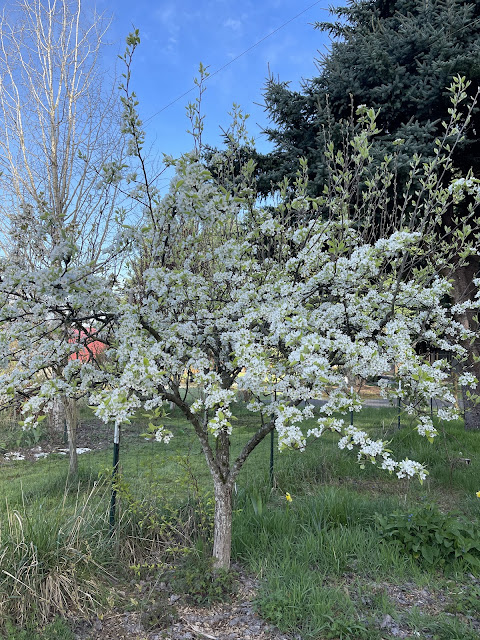With the Asian Pears in full bloom, I can see which branches are bearing and which are purely new vegetative growth that needs shortening. The last two years have been major reshaping for these trees. Here is the after photo, taken today.
The tree on the right came with the place, unknown variety. I planted the one on the left in about 2012. Both have multiple varieties of grafts. Oddly, my best European pears cone from a branch that I grafted to this Asian pear tree.
Before photos.
Deer voraciously eat pear leaves, ruining the crop for those branches. It's not enough to prune so that branches, now, are above favored browsing height - about six or seven feet. As new growth, and especially fruit, form, and willowy branches droop to favored dear height. Then they rip and pull and tear off those branches. In addition, branches with heavy fruit set sometimes break under the weight of the fruit.
I can't use a ladder, so I need for fruit bearing branches to be within reach. I shorten the branches so they don't droop too far. Also, for thinning fruit, about 75% or more need to be removed for earlier, sweeter, bigger, more disease free fruits. If I can't reach them, I can't thin them.
I also cut out anything that is becoming tall and out of reach, remove crossing branches, and clear out some of the inside branches for an open center.
My guess is that today I removed about 50% or more of the blooming branches and about 90% of the nonbearing vegetative shoots from last year's growth.
If every cluster that remains, produces one fruit, about four inches apart, it will mean more than we can eat, can, and give away.



No comments:
Post a Comment
Note: Only a member of this blog may post a comment.